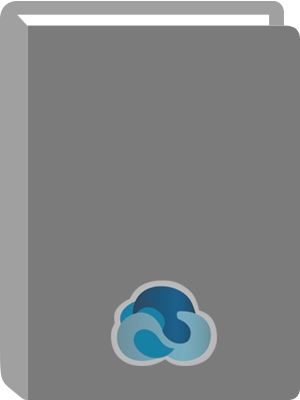
Principles of Quantum Computation and Information - Volume I : Basic Concepts.
Title:
Principles of Quantum Computation and Information - Volume I : Basic Concepts.
Author:
Benenti, Giuliano.
ISBN:
9789812794796
Personal Author:
Physical Description:
1 online resource (273 pages)
Contents:
Contents -- Preface -- Introduction -- 1. Introduction to Classical Computation -- 1.1 The Turing machine -- 1.1.1 Addition on a Turing machine -- 1.1.2 The Church-Turing thesis -- 1.1.3 The universal Turing machine -- 1.1.4 The probabilistic Turing machine -- 1.1.5 * The halting problem -- 1.2 The circuit model of computation -- 1.2.1 Binary arithmetics -- 1.2.2 Elementary logic gates -- 1.2.3 Universal classical computation -- 1.3 Computational complexity -- 1.3.1 Complexity classes -- 1.3.2 * The Chernoff bound -- 1.4 * Computing dynamical systems -- 1.4.1 * Deterministic chaos -- 1.4.2 * Algorithmic complexity -- 1.5 Energy and information -- 1.5.1 Maxwell's demon -- 1.5.2 Landauer's principle -- 1.5.3 Extracting work from information -- 1.6 Reversible computation -- 1.6.1 Toffoli and Fredkin gates -- 1.6.2 * The billiard-ball computer -- 1.7 A guide to the bibliography -- 2. Introduction to Quantum Mechanics -- 2.1 The Stern-Gerlach experiment -- 2.2 Young's double-slit experiment -- 2.3 Linear vector spaces -- 2.4 The postulates of quantum mechanics -- 2.5 The EPR paradox and Bell's inequalities -- 2.6 A guide to the bibliography -- 3. Quantum Computation -- 3.1 The qubit -- 3.1.1 The Bloch sphere -- 3.1.2 Measuring the state of a qubit -- 3.2 The circuit model of quantum computation -- 3.3 Single-qubit gates -- 3.3.1 Rotations of the Bloch sphere -- 3.4 Controlled gates and entanglement generation -- 3.4.1 The Bell basis -- 3.5 Universal quantum gates -- 3.5.1 * Preparation of the initial state -- 3.6 Unitary errors -- 3.7 Function evaluation -- 3.8 The quantum adder -- 3.9 Deutsch's algorithm -- 3.9.1 The Deutsch-Jozsa problem -- 3.9.2 * An extension of Deutsch's algorithm -- 3.10 Quantum search -- 3.10.1 Searching one item out of four -- 3.10.2 Searching one item out of N.
3.10.3 Geometric visualization -- 3.11 The quantum Fourier transform -- 3.12 Quantum phase estimation -- 3.13* Finding eigenvalues and eigenvectors -- 3.14 Period finding and Shor's algorithm -- 3.15 Quantum computation of dynamical systems -- 3.15.1 Quantum simulation of the Schrodinger equation -- 3.15.2 * The quantum baker's map -- 3.15.3 * The quantum sawtooth map -- 3.15.4 * Quantum computation of dynamical localization -- 3.16 First experimental implementations -- 3.16.1 Elementary gates with spin qubits -- 3.16.2 Overview of the first implementations -- 3.17 A guide to the bibliography -- 4. Quantum Communication -- 4.1 Classical cryptography -- 4.1.1 The Vernam cypher -- 4.1.2 The public-key cryptosystem -- 4.1.3 The RSA protocol -- 4.2 The no-cloning theorem -- 4.2.1 Faster-than-light transmission of information? -- 4.3 Quantum cryptography -- 4.3.1 The BB84 protocol -- 4.3.2 The E91 protocol -- 4.4 Dense coding -- 4.5 Quantum teleportation -- 4.6 An overview of the experimental implementations -- 4.7 A guide to the bibliography -- Appendix A Solutions to the exercises -- Bibliography -- Index.
Abstract:
Quantum computation and information is a new, rapidly developing interdisciplinary field. Therefore, it is not easy to understand its fundamental concepts and central results without facing numerous technical details. This book provides the reader a useful and not-too-heavy guide. It offers a simple and self-contained introduction; no previous knowledge of quantum mechanics or classical computation is required. Volume I may be used as a textbook for a one-semester introductory course in quantum information and computation, both for upper-level undergraduate students and for graduate students. It contains a large number of solved exercises, which are an essential complement to the text, as they will help the student to become familiar with the subject. The book may also be useful as general education for readers who want to know the fundamental principles of quantum information and computation and who have the basic background acquired from their undergraduate course in physics, mathematics, or computer science. Contents: Introduction to Classical Computation; Introduction to Quantum Mechanics; Quantum Computation; Quantum Communication. Readership: Upper-level undergraduates and graduate students in physics, mathematics and computer science.
Local Note:
Electronic reproduction. Ann Arbor, Michigan : ProQuest Ebook Central, 2017. Available via World Wide Web. Access may be limited to ProQuest Ebook Central affiliated libraries.
Genre:
Electronic Access:
Click to View